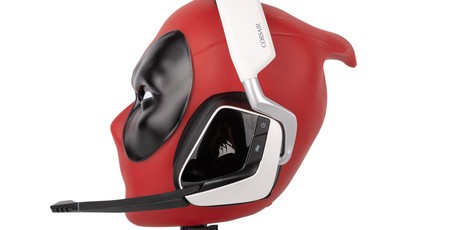
Software
For custom EQ settings, surround sound, and lighting control, you’ll need to install Corsair’s beefy iCUE package and keep it running at all times – otherwise it’s back to rainbow ear cups for you. It’s come a long way since its inception and is easily one of the best all-encompassing suites (i.e. it’ll control pretty much anything Corsair, not just this headset).
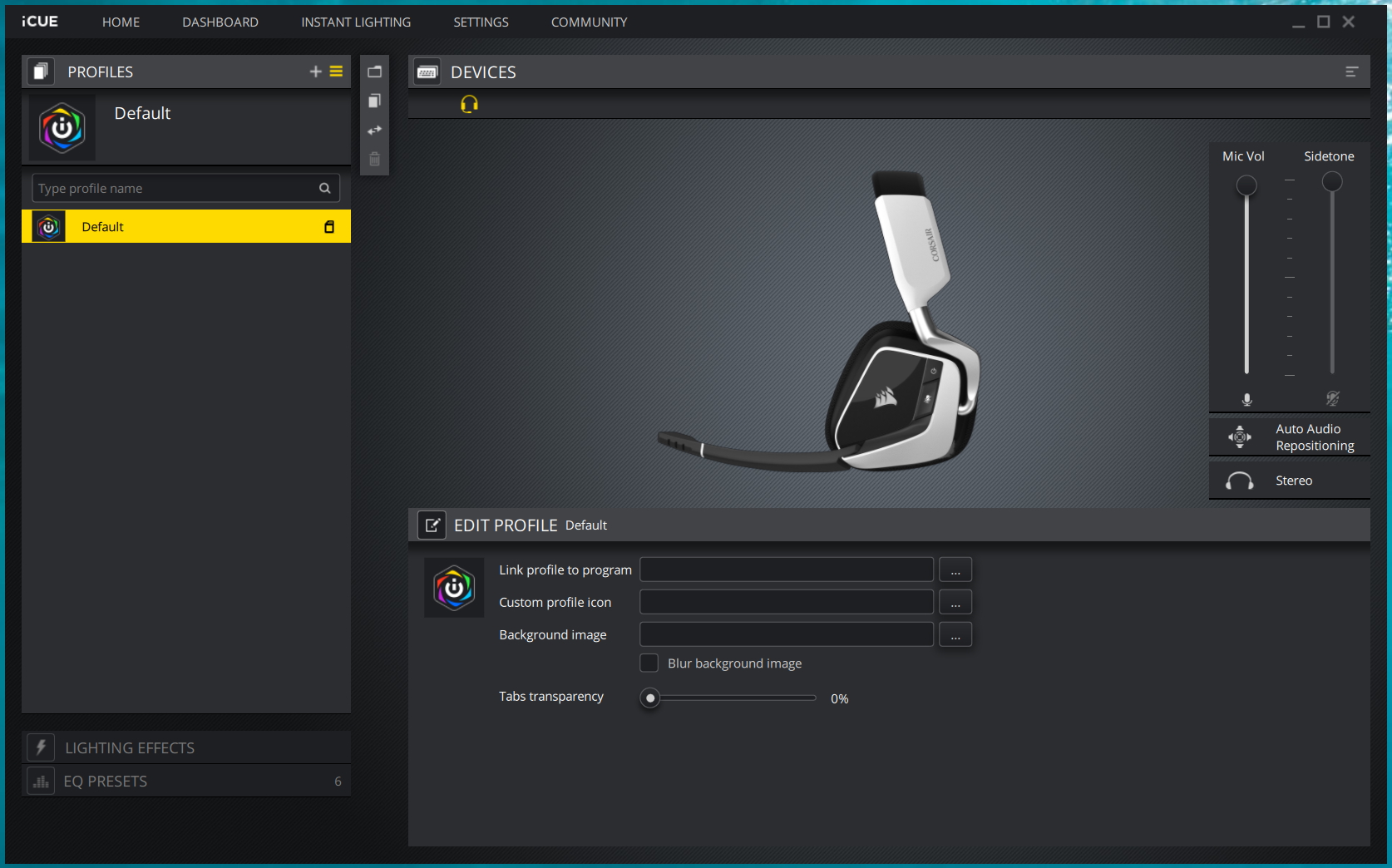
As usual, you can have different profiles for the headset (and any other Corsair devices) and have the ability to link these to automatically come into action for different programs. An example of a simple setup would be having surround sound activated along with an EQ profile designed to boost footsteps within a profile tied to CS:GO, along with a default profile in stereo mode with a more balanced EQ for everything else. Adding and customising profiles is very easy.
At all times you have access to the key settings and a clear display of the current light show on the ear cups. The mic controls (sensitivity and sidetone) are accessible when the mic is flipped down. There’s also a button to toggle between stereo and virtual surround while a separate button toggles ‘Auto Audio Repositioning’. After speaking with Corsair, I know this setting has to do with how the headset decodes audio streams with different channel counts. It is typically left on, but it has been silently exposed as a user-configurable setting in recent iCUE releases so users can switch it off in the event they run into sound issues with certain applications, with Chrome and Overwatch given as examples. I left it on for testing and didn’t run into any issues.
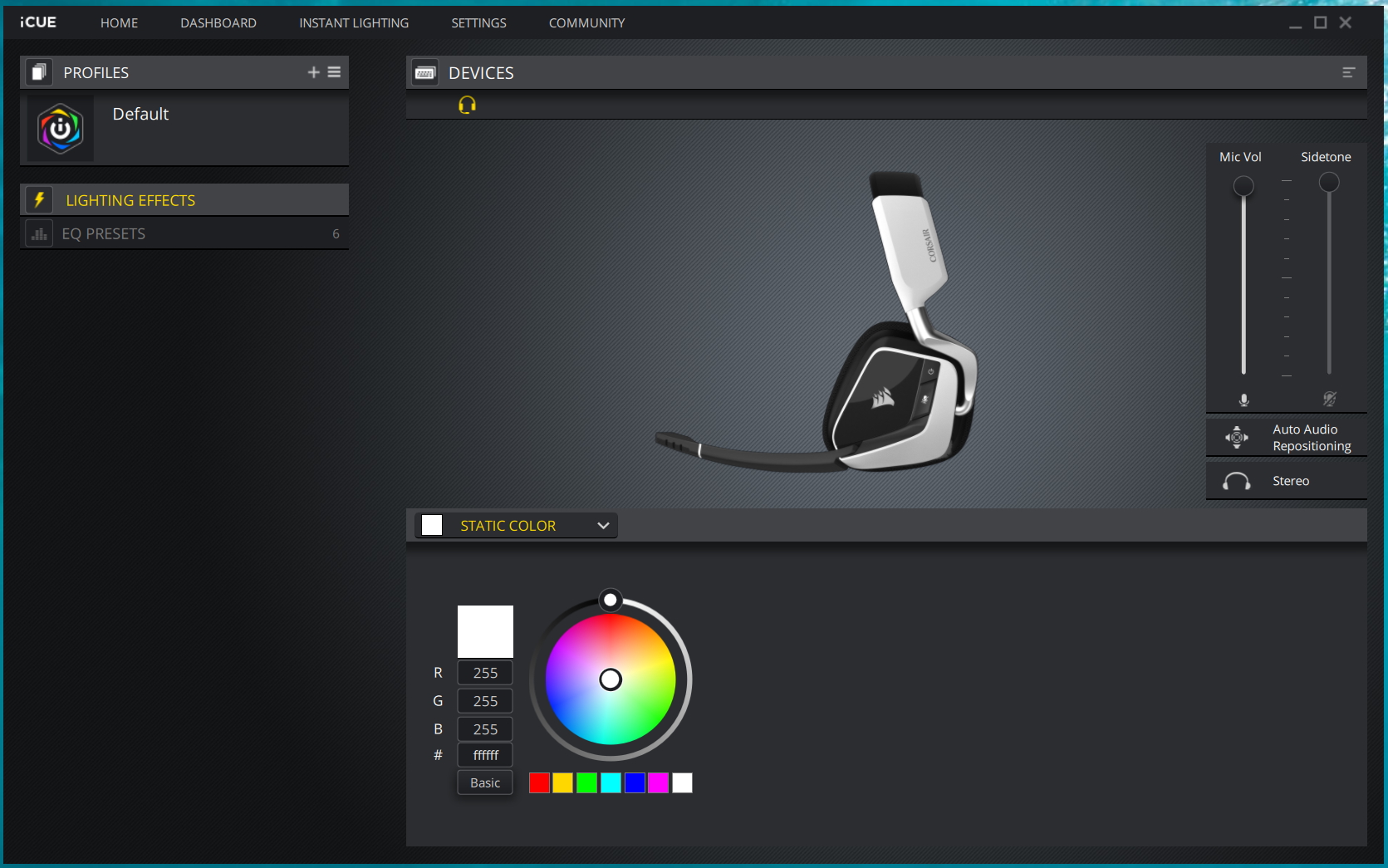
The Lighting Effects menu gives a simple drop-down menu, and some of the effects have further settings you can tweak like colour and speed. The list of Lighting Link effects is those which can be synchronised with other devices within the profile.
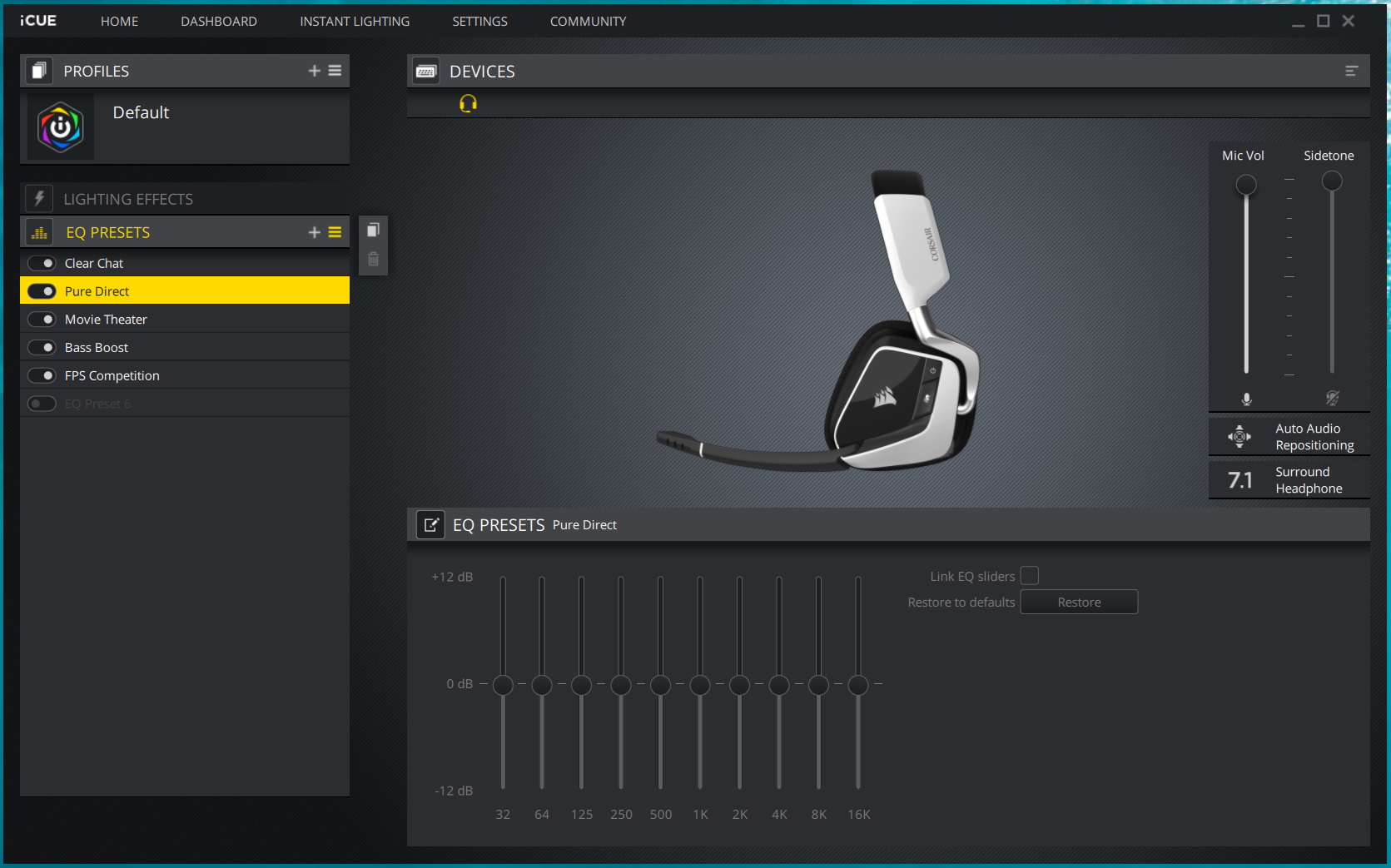
EQ Presets is also self-explanatory. The five presets cannot be tweaked, but you can substitute your own without fuss. You can have up to five EQ settings ready to cycle through on each profile, but if you only want one or two you just toggle the others off. You can also easily amend the order through which they are cycled.
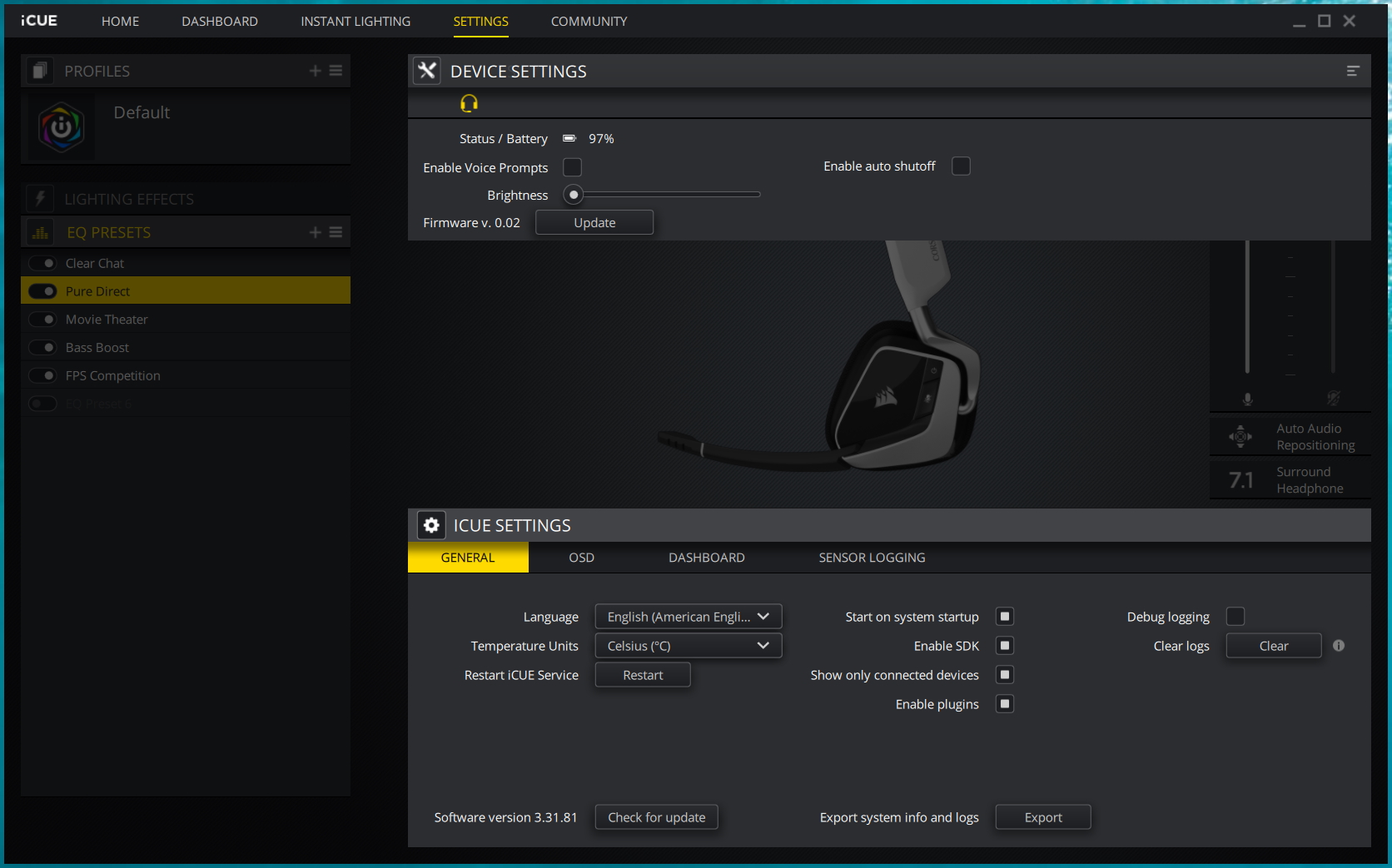
Finally, within the Settings tab up top you’ll find Device Settings, and these are things that apply to all the profiles and are more universal (though iCUE still needs to be running for them to work). The headset’s battery status is shown here too; sadly there’s no way to tie this to the desktop. You can also opt here to change from beeps and boops to a soothing-but-after-a-while-annoying female voice for the various audio cues, set the LED brightness with a slider (remembering that lower = more battery), update the firmware, and configure the auto shutoff time to between five minutes (the default) and 99. After that amount of time, the headset will beep every minute until sound is either played or 10 minutes elapses, at which point it will fully turn off. If that irritates you the same way it did me, you can simply turn the feature off and remember to turn the headset off manually.
Performance
Sound from the Void RGB Elite Wireless is pretty solid, all told. Using the flat ‘Pure Direct’ EQ preset, there were no obvious weaknesses while listening to the usual selection of test music, but neither did it blow us away, and in mid-range heavy tracks it can sound a little compressed and clustered. The crispness and dynamic range of more refined headsets is missing, but that’s understandable.
Some EQ tweaking to boost the lows and especially the highs makes things more dynamic and helps to space things out, so it’s a shame a better tuned EQ setting isn’t available out of the gate. The bass response is mostly satisfying across the range too, but it definitely falls off in the lower frequencies. Thankfully, the Bass Boost EQ does what it says without getting silly.

This all translates into a satisfying experience when dealing with films (including high-octane action and quieter, dialogue-focused scenes) and games, but again it’s nothing outstanding. There’s enough volume on tap for those who like it loud, and the headset doesn’t get distorted at full volume. The ear cup cushioning isn’t good at blocking noise, so leakage out is fairly high and there’s not much by way of passive noise cancellation.
The surround sound is a fairly standard implementation. It’s always hard to describe the difference it makes, because it varies by source, working better in some films and games than others. Generally, it can be quite nice to leave it on, especially in FPS games, because while it doesn’t make give you a bat-like knowledge of where exactly things are in your environment, it’s usually better at giving you a sense of this than when it’s off, especially in popular titles. As such, it’s a useful feature to have, especially when there’s an easy way on the hardware itself to toggle whether it’s on or off – just as there is here.
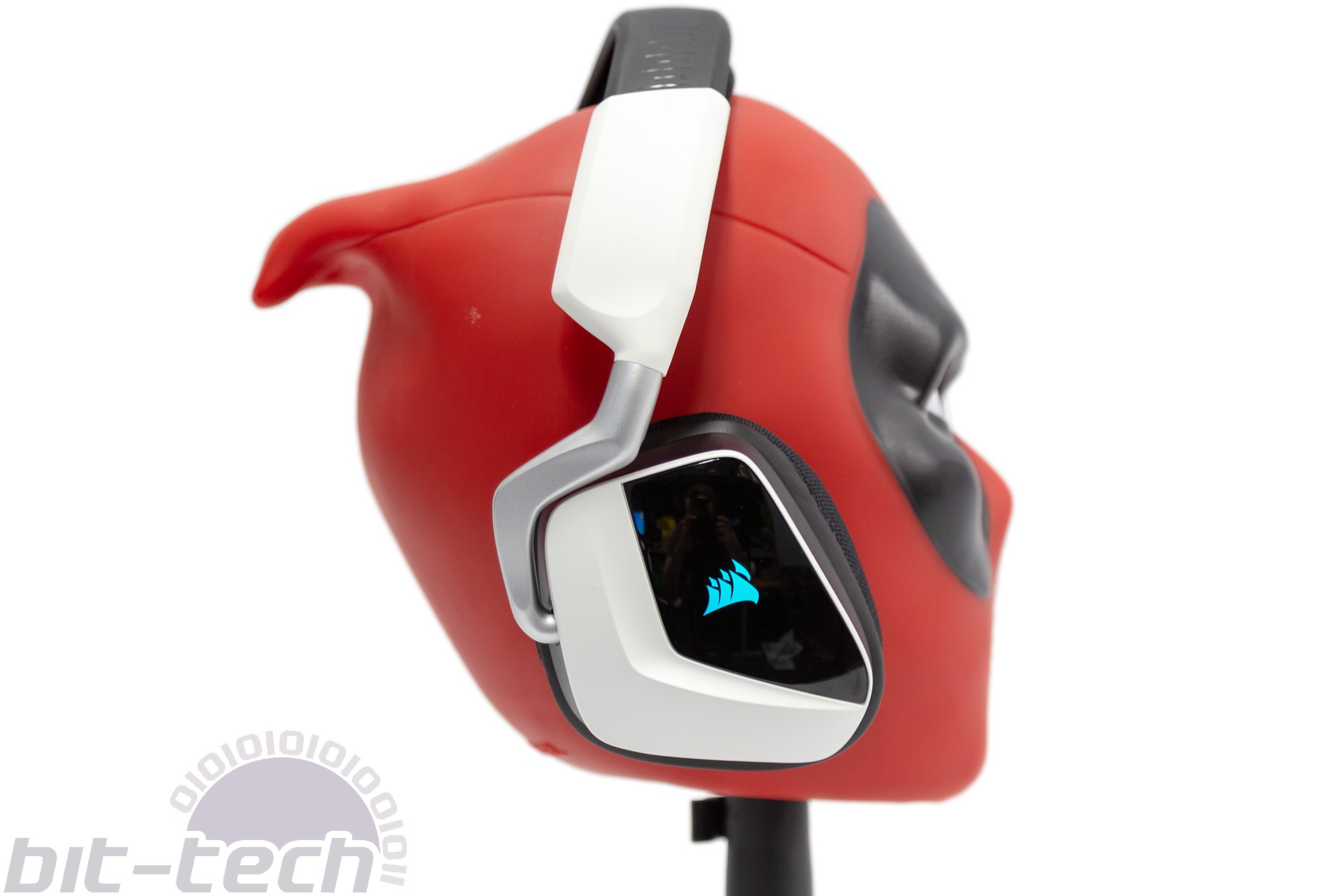
The headset is also compatible with Windows Sonic spatial sound, which will totally override any custom audio settings in iCUE. Again, mileage will vary depending on what you’re listening too, but it means you can easily see which is better for your own setup and ears.
The microphone records a little quietly but is otherwise very competent. My voice sounded clear and accurate in the test recordings, and while there’s no fancy means of cutting background noise, it still kept its focus on my voice much more than loud typing or sound emanating from the cans themselves.
Conclusion
Corsair’s headset here is comfortable aside from the noticeably looser fit than most, and it’s totally fine for long gaming sessions. The features are all easy to make use of both in software and in the hardware, though the software needs to be kept running either way. Sound quality from both the drivers and the microphone is good but neither is truly great – the headphones need some EQ tuning and the microphone is a tad quiet. None of my criticisms are major drawbacks, however, and the headset remains solid all-round as a result. Given the feature list, it’s tough to ask much more at this price. If it hasn't tickled your fancy, Corsair's own RGB-free HS70 and the even cheaper HyperX Cloud Stinger are worth looking into.
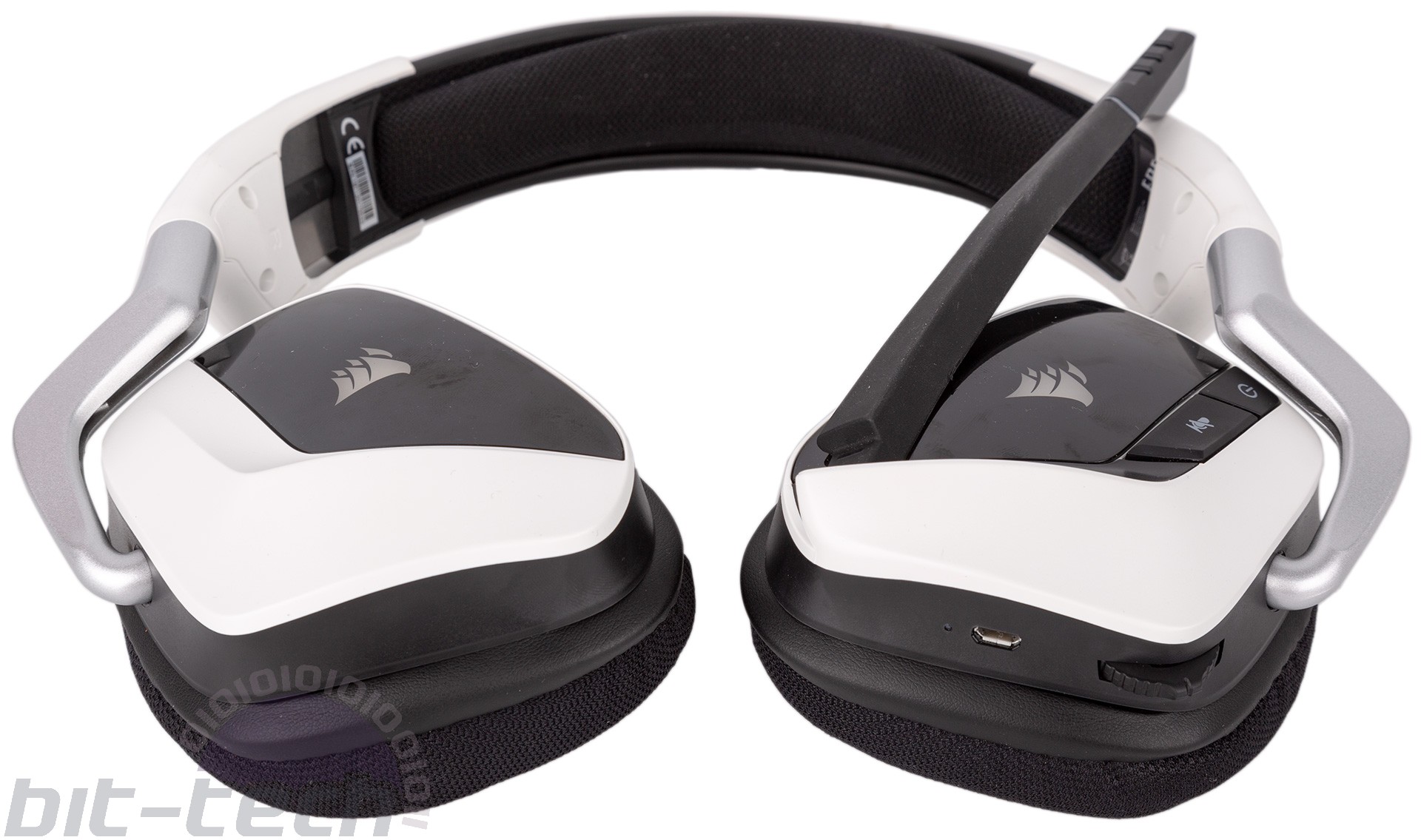
You can do better if you forego wireless connectivity, but £100 is a compelling price tag for wireless headset, and this one seems to be on sale on Amazon for £70 quite frequently. As such, to be an attractive option all Corsair had to do was not make any major slip-ups anywhere else. Thankfully, it hasn’t made any, and the Void RGB Elite Wireless thus comes recommended to anyone looking for a good value wireless gaming headset - just don't expect it to blow your socks off.


MSI MPG Velox 100R Chassis Review
October 14 2021 | 15:04


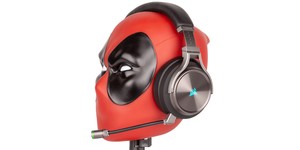
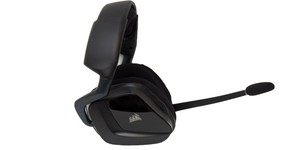





Want to comment? Please log in.